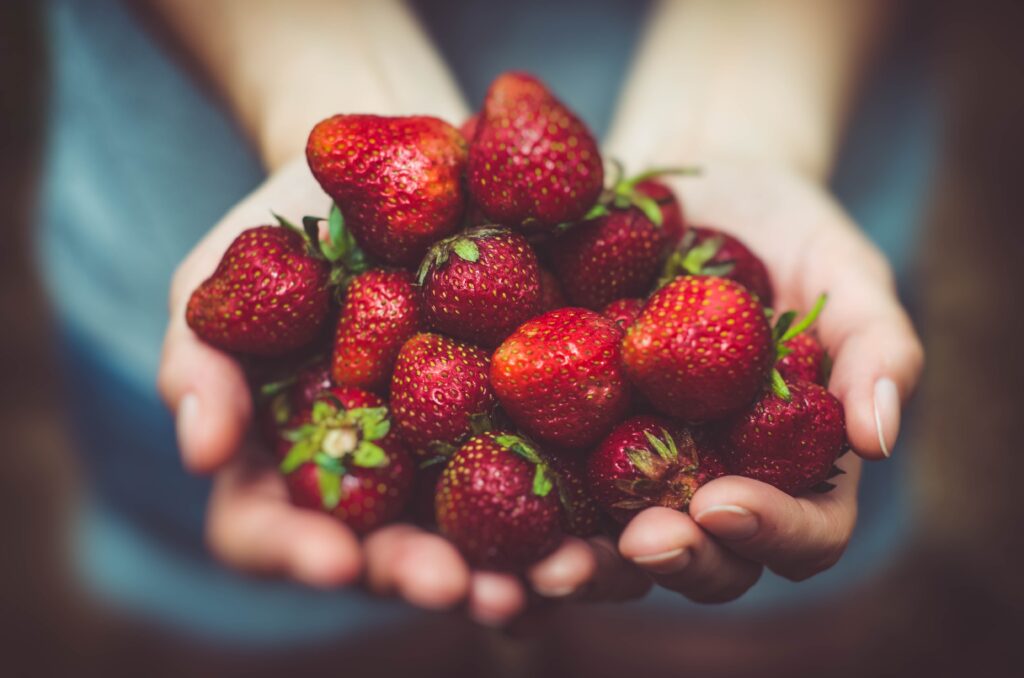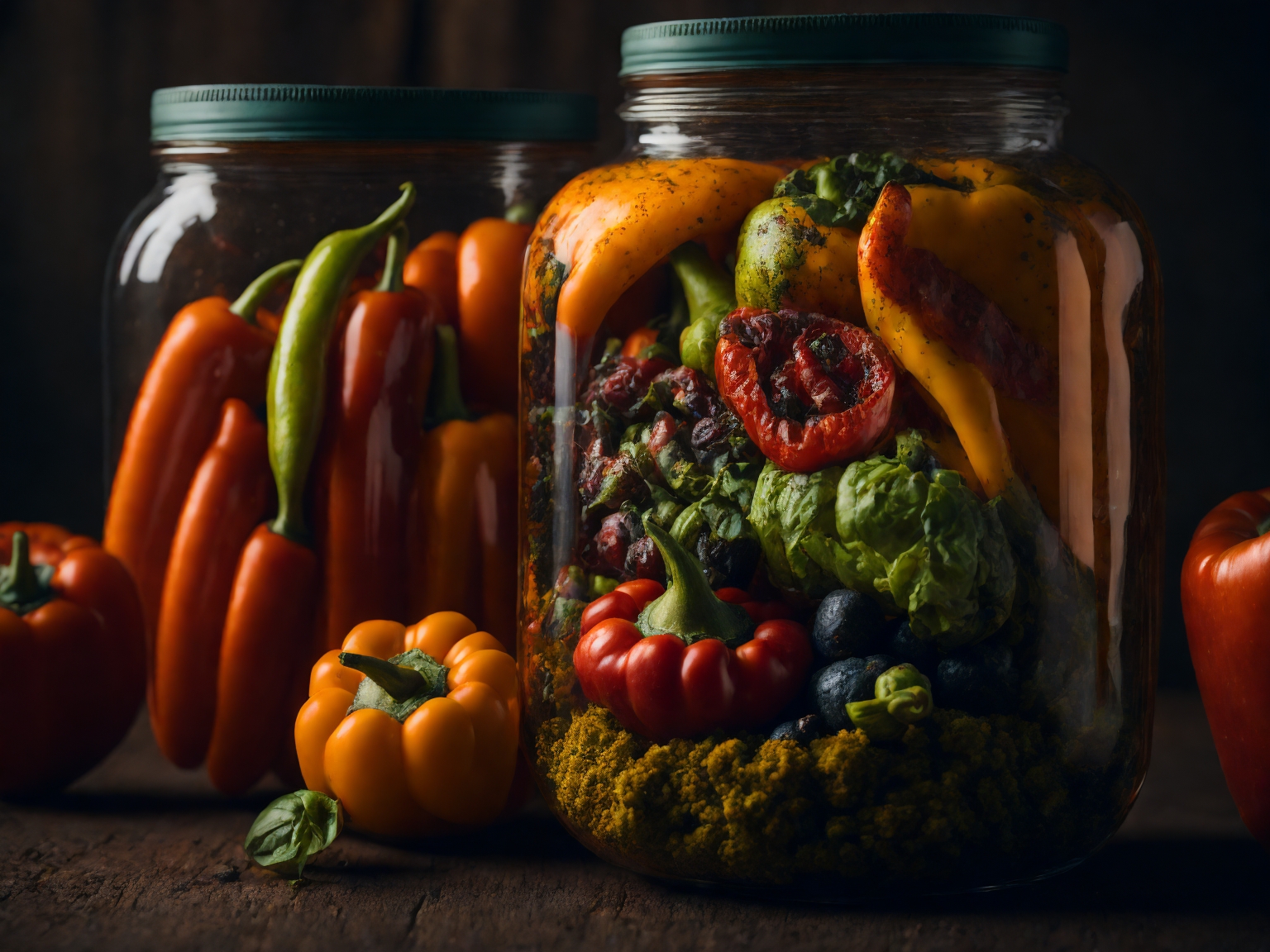
Canning
Introduction to Canning
Canning is a popular method of food preservation that has been used for centuries. It involves placing food in jars or cans and then heating them to destroy any bacteria or microorganisms that could cause spoilage. Canning allows you to enjoy fresh produce all year round, as the process seals in the flavor and nutrients of the food.Water Bath Canning
Water bath canning is a simple and effective method for preserving high-acid foods such as fruits, pickles, and tomato-based products. In this method, the jars filled with food are submerged in boiling water and allowed to process for a specific period of time. The high temperature eliminates any harmful bacteria and creates a vacuum seal, ensuring the food remains safe and shelf-stable.Pressure Canning
Pressure canning is essential for low-acid foods such as vegetables, meats, and poultry. These foods need to reach higher temperatures to eliminate the risks of botulism. A pressure canner is used in this method, which allows the internal temperature to rise above the boiling point of water. The increased pressure destroys any microorganisms, ensuring safe and long-lasting preservation.Benefits of Canning
Canning offers numerous benefits. Firstly, it allows you to have access to a variety of foods throughout the year, regardless of seasonal availability. This can be especially useful for those living in areas with limited access to fresh produce. Secondly, canning preserves the nutritional value of foods, as the high temperatures used in the process do not significantly diminish the vitamins and minerals. Lastly, home-canned foods can be personalized to suit your taste preferences, allowing you to experiment with different flavors and combinations.Precautions and Tips for Successful Canning
To ensure successful canning, it is important to follow a few precautions and tips. Always use fresh and high-quality ingredients to achieve the best results. Cleanliness is crucial during canning, so make sure all utensils, jars, and equipment are properly sanitized. Follow recipes and processing times accurately to ensure that the food is safely preserved. It is also recommended to inspect jars for any cracks or chips before use, as damaged jars may compromise the seal and safety of the food. Lastly, store canned goods in a cool, dark place to maximize shelf life.

Freezing
Introduction to Freezing
Freezing is a popular method of food preservation that helps maintain the quality and taste of various foods. By lowering the temperature, freeze-preserved foods can be stored for extended periods without significant loss of nutritional value or flavor.Appropriate Freezing Containers
When it comes to freezing, choosing the right containers is essential. Freezer-safe containers such as rigid plastic containers, glass jars, and freezer bags are ideal for storing different types of food. Make sure the containers are airtight to prevent freezer burn and maintain the freshness of the food.Preparing Food for Freezing
Properly preparing food before freezing is crucial to retain its quality. Blanching, a short boiling process followed by immediate cooling, is often recommended for vegetables and fruits to preserve their color, flavor, and texture. It helps inactivating enzymes that could cause deterioration during freezing. Labeling the containers with the name and date of freezing is also important for easy identification.Freezing Techniques
There are various freezing techniques that can be employed depending on the type of food being preserved. For liquids or soft foods, it is advisable to leave some headspace in the container to allow for expansion during freezing. Flash freezing, where food is spread out in a single layer on a baking sheet before transferring to storage containers, is ideal for easy portioning and quick thawing.Thawing and Using Frozen Food
When thawing frozen food, it is important to do so safely to prevent bacterial growth. The safest method is to thaw food in the refrigerator, as the cold temperature ensures slow thawing while maintaining the quality of the food. If time is a constraint, thawing in a microwave on the defrost setting is acceptable. Once thawed, it is best to use the food promptly to avoid any loss in taste or texture.Benefits and Drawbacks of Freezing
Freezing offers several benefits, such as preserving the nutritional content and quality of the food. It also allows you to buy in bulk and freeze leftovers, reducing waste and saving money. However, freezing does have some drawbacks. Some foods, particularly those high in water content, may undergo texture changes upon thawing. Freezing can also affect the taste of certain foods, especially delicate herbs and spices.Drying
Introduction to Drying
Drying, also known as dehydration, is one of the oldest and simplest methods of food preservation. By removing moisture from food, the growth of bacteria, yeast, and mold is inhibited, extending the shelf life of the product.Sun Drying
Sun drying is a traditional method of food preservation that utilizes the heat of the sun to remove moisture. It is commonly used for fruits, vegetables, and herbs. To sun dry food, it is spread out on trays or racks and placed in direct sunlight until the desired level of dryness is achieved. While this method is cost-effective and energy-efficient, it is heavily reliant on weather conditions and may take several days to complete.Oven Drying
Oven drying is a more controlled and time-efficient method of food dehydration. It involves placing food on oven racks at a low temperature, typically between 130-160°F (54-71°C), and allowing the warm air to circulate and evaporate the moisture. Oven drying is convenient as it does not depend on weather conditions. However, it may require a longer period of time compared to other drying methods.Food Dehydrators
Food dehydrators are specifically designed appliances that provide an optimal environment for drying food. These machines use a combination of heat and airflow to remove moisture. Food dehydrators offer a more consistent and efficient drying process compared to other methods, resulting in evenly dried and flavorful products. They also allow for precise temperature control, ensuring the food is dehydrated at the appropriate heat to retain its nutritional value.Tips for Effective Drying
To achieve effective drying, it is important to slice the food into uniform thickness to ensure even drying. Thicker slices will take longer to dry and may not dry properly. Proper air circulation is essential for successful drying, so make sure trays or racks are not overcrowded. Check the food periodically during the drying process to determine its progress and to prevent over-drying.Benefits and Limitations of Drying
Drying offers several benefits, such as a compact and lightweight end product that requires minimal storage space. Dried foods retain most of their nutritional value and are easy to rehydrate when needed. Additionally, dried food is often more portable and suitable for long hikes or camping trips. However, drying may alter the texture and taste of certain foods, and the process can be time-consuming, especially with larger and more water-rich items.
Can I Use Water Purification Methods for Food Preservation in the Wild?
Water is essential for survival, especially when you’re exploring the wild. But did you know that purifying water in the wild can also aid in food preservation? By ensuring that your water is free from harmful bacteria and contaminants, you can use it to wash and clean your food, keeping it safe and edible for a longer period. So remember, prioritizing the purification of water in the wild not only quenches your thirst but also enhances your chances for successful food preservation.
Pickling
Introduction to Pickling
Pickling is a preservation method that involves preserving food in an acidic medium. It enhances the flavor and extends the shelf life of various fruits, vegetables, and even meats. Pickled foods are known for their tangy and often savory taste, making them a popular choice for snacks or additions to meals.Salt Brine Pickling
Salt brine pickling is a simple method that relies on salt to create an environment where beneficial bacteria (lactic acid bacteria) can thrive, while inhibiting the growth of harmful bacteria. Vegetables are thoroughly washed, then soaked in a brine solution made of salt and water. The brine solution is then poured over the vegetables in jars, ensuring they are fully immersed. The fermentation process transforms the natural sugars present in the vegetables into lactic acid, resulting in the tangy flavor associated with pickled foods.Vinegar Pickling
Vinegar pickling is another common method of preservation that uses vinegar as the acidic medium. Vinegar is a natural preservative with antimicrobial properties that aid in preventing spoilage. In this method, vegetables or fruits are immersed in a solution of vinegar, water, and various spices or flavorings. The mixture is then heated and poured into sterilized jars, creating a tangy and flavored preserved food.Fermented Pickling
Fermented pickling is a type of pickling that relies on the process of fermentation to preserve food. Like salt brine pickling, it utilizes the beneficial bacteria present naturally on the vegetables to ferment sugars into lactic acid. This method produces probiotic-rich pickles that are not only delicious but also beneficial for gut health. Fermented pickling requires more time compared to other methods, as it involves allowing the vegetables to ferment for several days before they are ready to be consumed.Quick Pickling
Quick pickling is a popular method for those who want to enjoy pickled flavors without the time-consuming fermentation process. It involves creating a vinegar-based brine and immersing the vegetables or fruits for a shorter period of time, typically a few hours or overnight. Quick pickling offers a quick and easy way to preserve the flavor and crunch of the produce while providing a tangy taste.Tips for Successful Pickling
To ensure successful pickling, it is important to start with fresh and high-quality ingredients. Thoroughly clean and sterilize all tools and jars to prevent the growth of harmful bacteria. Follow recipes closely, ensuring the correct ratio of vinegar, water, salt, and spices. Pay attention to the recommended processing time and storage conditions to maintain the quality and safety of the pickled foods. Experiment with different vegetables, spices, and flavorings to create unique and delicious pickled creations.Health Considerations
Pickled foods can be a healthy addition to a balanced diet. Fermented pickles, in particular, are rich in probiotics and can contribute to a healthy gut microbiome. However, pickled foods can be high in sodium, so those on a low-sodium diet should consume them in moderation. Additionally, individuals with certain health conditions, such as high blood pressure, should be cautious about their pickled food consumption due to the sodium content.
I’m Alex, the author behind True Survivalist. As a survival enthusiast myself, I’ve created this website to serve as a valuable resource for fellow survivalists and preppers. Whether it’s understanding survival situations, emergency preparedness, or finding the right survival gear, I’ve got you covered. Through a series of informative guides, I aim to provide answers to commonly asked questions, debunk common myths, and help you avoid common mistakes. At True Survivalist, I believe in equipping you with the knowledge and tools you need to be prepared for any survival scenario. Join me on this journey of self-reliance and resilience.
